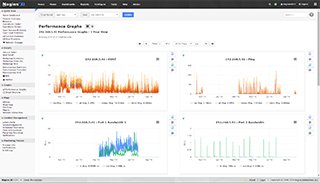
Monitoring Linux/Unix Machines
Need Help Configuring Nagios?
Our tech support team is happy to help you with any questions you might have. Contact us on our online support forum at https://support.nagios.com/forum/
Nagios XI Makes Monitoring Easier:
Nagios XI is the easy-to-use, enterprise version of Nagios that features:
- Web-Based Configuration provides advanced configuration features
- Monitoring Wizards make it easy to monitor new devices, applications, and services
- Customizable Dashboards allow for per-user customization
- Integrated Performance Graphs provide trending and capacity planning information
- Advanced Reports provide data insight and exporting capabilities
- Data Visualizations enable powerful analysis of patterns and problems
- Nagios Core Import functionality makes it easy to migrate from Nagios Core
- ... and many other features
Download a free 30-day trial to give Nagios XI a spin.
Inquire today and let our Quickstart team help you get started with Nagios XI
 Up To: Contents
Up To: Contents
 See Also: Quickstart Installation Guide, Monitoring Publicly Available Services
See Also: Quickstart Installation Guide, Monitoring Publicly Available Services
Introduction
This document describes how you can monitor "private" services and attributes of Linux/UNIX servers, such as:
- CPU load
- Memory usage
- Disk usage
- Logged in users
- Running processes
- etc.
Publicly available services that are provided by Linux servers (HTTP, FTP, SSH, SMTP, etc.) can be monitored easily by following the documentation on monitoring publicly available services.
Note: These instructions assume that you've installed Nagios Core using the instructions in one of the quickstart guides. The sample configuration entries below reference objects that are defined in the sample config files (commands.cfg, templates.cfg, etc.) that are installed if you follow the quickstart.
Overview
Tip: We recommend you read the documentation in the NRPE addon for instructions on how to monitor a remote Linux/Unix server using NRPE.
There are several different ways to monitor attributes or remote Linux/Unix servers. One is by using shared SSH keys and the check_by_ssh plugin to execute plugins on remote servers. This method will not be covered here, but can result in high load on your monitoring server if you are monitoring hundreds or thousands of services. The overhead of setting up/destroying SSH connections is the cause of this.
Another common method of monitoring remote Linux/Unix hosts is to use the NRPE addon. NRPE allows you to execute plugins on remote Linux/Unix hosts. This is useful if you need to monitor local resources/attributes like disk usage, CPU load, memory usage, etc. on a remote host.

